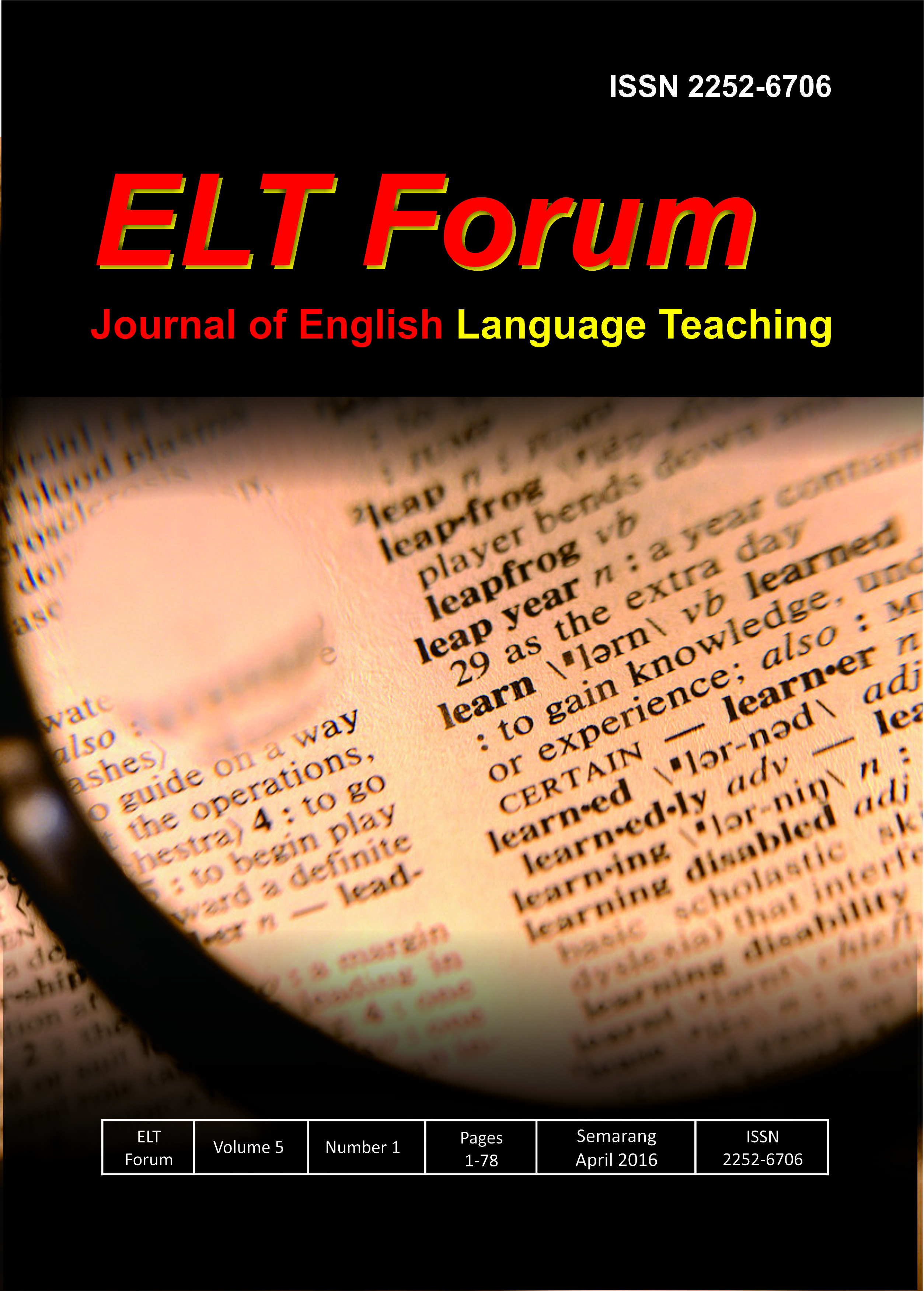INTERPERSONAL MEANINGS IN MICHELLE OBAMA’S SPEECH AT MEMORIAL SERVICE FOR Dr. MAYA ANGELOU (A Descriptive Qualitative Study)
Abstract
This study investigated the interpersonal meaning which lies on the eulogy speech which was delivered by Michelle Obama at Dr. Maya Angelou’s memorial service. The purposes of this study were to describe the tenor realized in the text, the construction of the interpersonal meaning and the contribution of this study for language education. This study was categorized as a discourse analysis which used qualitative approach as its main method. The qualitative approach was used to describe the quantitative data which was got from the analysis. The data for this study was analyzed using two units of analysis. In terms of grammar analysis, the units of analysis were the MOOD system, modality, and mood types, while the lexical analysis mainly analyzed the appraisal of the speech. Based on those analysis, it can be concluded that the tenor that was realized in the speech showed the strong social relationship between the interactants. In term of status, she did not stand as the first lady of United States. In terms of contact, she tried to make the situation as friendly as possible. In addition, in terms of affect, she showed that she gave a strong involvement with the audiences through her speech. In terms of grammar analysis, it showed that Michelle Obama tended to represent herself as one of the black women who got inspiration from Dr. Maya Angelou. She also intended to inform the audiences about Dr. Maya Angelou’s life. The appraisal analysis showed that judgment was the most frequent appraisal system in the speech. Michelle Obama tended to give a high appraisement towards Dr. Maya Angelou’s struggle and actions during her life.References
Dornyei, Zoltan. 2007. Research Methods in Applied Linguistic; Quantitative, Qualitative and Mixed Methodologies. New York; Oxford University Press
Droga, L. and S. Humphrey. 2005. Grammar and Meaning; an Introduction for Primary Teachers. New South Wales; Southwood Press.
Eggins, S. 2004. An Introduction to Systemic Functional Linguistics 2nd ed. London; Continuum.
Eggins, S. and D. Slade. 1997. Analysing Casual Conversation. London; Cassell.
Gerot, L. and P. Wignell. 1995. Making Sense of Functional Grammar.New South Wales; GerdStabler.
Halliday, M.A.K.1985 .An Introduction to Functional Grammar.2nd ed. London; Edward Arnold.
Halliday, M.A.K.1994 .An Introduction to Functional Grammar.2nd ed. London; Edward Arnold.
Halliday, M.A.K. 2004.An Introduction to Functional Grammar.3rd Ed, revised by C. M.I.M. Matthiessen. London: Arnold.
Halliday, M.A.K and R. Hasan. 1989. Language, context, and text: Aspect of language in social-semiotic perspective. Victoria: Deakin University Press.
Hastomo, WisdiyanHadi. 2010. The interpersonal meaningOfbarackobama’sspeech entitled “america will never be at war with islamâ€.Final Project.English Department, Faculty of Languages and Arts, Semarang State University.
Kent, Michael Lee. 1997. The Rhetoric Of Eulogies: A Generic Critique Of Classic And Contemporary Funeral Oratory. Thesis.Purdue University.
Kothari, C.R. 2004. Research Methodology; Methods and Techniques 2nded. New.Delhi; New Age International.
Martin, J.R., D. Rose. 2004. Working with Discourse.New York; Continuum.
Najib, Aha Ainun. 2014. Tenor, Interpersonal Meanings and Appraisal Found in the Speech of Barack Obama at Nelson Mandela Memorial.FinalProject.English Department, Faculty of Languages and Arts, Semarang State University.
Patton, M. 1990. Qualitative evaluation and research methods. Beverly Hills, CA: Sage.



_.jpg)
_.jpg)




